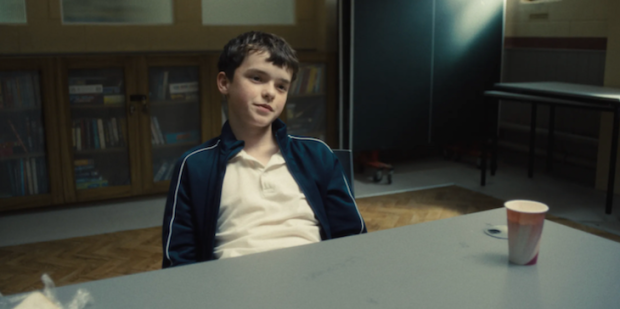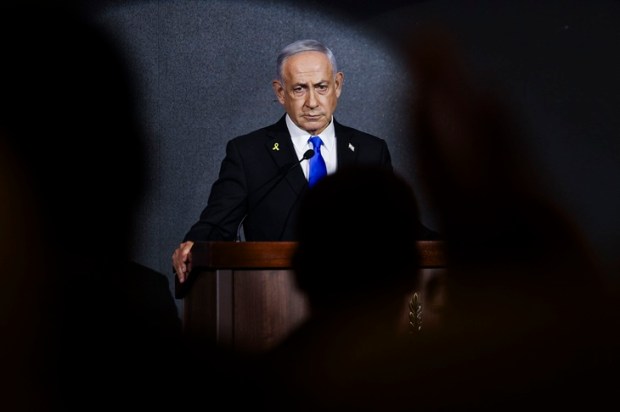If the discourse within Australian education is to be believed, our classrooms have never been more inclusive, collaborative, interactive, empowering, and fun. At the same time Australian primary and secondary students have never been as disruptive, aggressive, disengaged, and miserable. In classroom behaviour, Australian students ranked 33rd out of the 37 OECD nations, leading to calls for classroom behaviour to be explicitly taught as an academic subject alongside English, Math, and Science. Several longitudinal studies have also reported an increase in anti-social behaviour and violence committed by students against fellow students and staff. The OECD Programme for International Student Assessment (PISA) comparing similar first-world nations has also shown that Australian students experience the second highest level of bullying, only ranking behind Latvia. Predictably this rise in misbehaviour has coincided with the increasing instability of student mental health and school refusal. Students are not the only ones dealing with violence, malicious rumours, and emotional abuse as this rampant misbehaviour has had a withering effect on the teaching profession. Over 70 per cent of current Australian teachers are considering leaving the profession, 35 per cent of new teachers leave within 5 years, and the fast-tracking of ill-prepared university students into classrooms is set to worsen this.
None of the facts I have listed above are unknown to school leaders but consistently the proposed solutions have been calls to return to the chaos of open-plan classrooms, to the neglect of whole language approaches, back to harmony days and other ready-made celebrations from an ever-expanding secular book of days, back to student-centred learning, back to restorative justice. It is beyond frustrating to be a teacher in today’s schools and watch young lives slip by into mediocrity and misbehaviour because you have only been equipped with word salad fads. Why were schools of the past not as affected by these issues? What has changed in how we educate? Fortunately, I now know that I am not the only teacher asking this question.
For the past several years across Australia, a quiet revolution has been taking place within networks of teachers and parents with a great passion to see the restoration of a genuinely intellectual, moral, and spiritual education for our nation’s young. This movement has come under the umbrella term of ‘Classical Education’, a movement that originated in the United States in response to similar epidemics of violence and disillusionment in their schools due to the same modernistic changes to education we have adopted in Australia. Indeed, the Governor of Florida Ron DeSantis recently called for a return to the principles of classical education with US liberals crying out in protest that it is dangerously conservative. Despite the associations the term classical might have, it is not an elitist or atavistic throwback to days of yore but rather setting the foundation of our education on treasures old and new. Classical education attends to the whole person by focusing on the cultivation of virtues and wisdom. This is accomplished through the study of great books through mimetic and Socratic instruction, in the pursuit of the good, the true, and the beautiful. It is typically structured around the liberal arts with an explicit focus on direct instruction for literacy and numeracy. In a certain sense, our primary schools have already shifted towards classical education with the mandated phonics instruction.
In recent years the US has seen a huge growth of classical K-12 schools, in 2010 there were around a 100 in operation and now there are over 1,000 with further growth expected. Australia also looks poised to follow this rapid growth, with the opening of two new classical schools in Brisbane, St. John Henry Newman College and St. John of Kronstadt Academy, and Hartford College in Sydney. And just recently St Philip’s School in Melbourne has also proposed a shift to a classical model. This enthusiasm begs the question, what is the classical difference concerning student behaviour?
In the first place, there is a difference in how the concept of misbehaviour is treated from a classical education point of view. In our current system, misbehaviour tends to be seen from a utilitarian point of view as an inconveniently human part of our student, to be addressed by ad hoc interventions which do not interrupt the essential assembly line. In contrast, discipline and behaviour within classical education is achieved not only in ad hoc measures when required but is attended through the very spirit of the classroom in both content and pedagogy that is grounded in authority and taught with authority.
Prior to the Enlightenment, the classical understanding was that power is part of authority but, by necessity, all true authority is freely recognised and given. Hence true authority has little to do with its corruption, authoritarianism.
The ghost of the tyrant haunts the modern teacher. In an effort to fly as far away from the justifiably detested authoritarianism of the post-industrial classroom, ruled by fear and modelled on the factory, modern teachers have dashed to the other end of the spectrum and abandoned discipline altogether. Here they have thrown themselves to the supposed perfect innocence of children to rescue them from the burden of authority. In its most distilled form this movement is called student-centred learning. Rather than bring about a blissful utopia this movement has generated an epidemic of misbehaviour that we seem unable to fix. But can we act surprised that our students are misbehaving to an extreme degree when we refuse to lay down rules of discipline or promote the authority of their teacher and the value of their education? How can I expect my students to respect my authority as a teacher when I am constantly asserting myself instead as a friend, a collaborator, or a personal growth consultant? In this case, when a student misbehaves they do not recognise the authority of someone guiding them away from their excesses, they have not been habituated into recognising a teacher as someone greater, not merely in institutional power, but greater in knowledge, wisdom, and virtue. For them, the teacher is a friend to joke around with when everything in the class is progressing as they like it, but becomes a tyrant the moment the teacher is an obstacle to their whims. It is only logical. We too would judge a friend poorly if they told us off and tried to sit us in a corner, perhaps we would give them a piece of our mind as many of our students do with their teachers. The inverse is equally true, teachers are under far more psychological stress when subconsciously viewing their students as pseudo-equals. Who is easier to forgive and maintain patience around: a child or a rude and incompetent colleague?
Our hypocrisy in bemoaning this behaviour crisis has been best summarised by C.S. Lewis’s treatise on education, The Abolition of Man: ‘We make men without chests and expect of them virtue and enterprise. We laugh at honour and are shocked to find traitors in our midst. We castrate and bid the geldings be fruitful.’ Like a hanger-on friend who is irritating but tolerated because they have the latest video games, most students also tolerate the buddy-teacher because they are a gatekeeper of grades, or give a student a sense of self-importance. In this arrangement, where the teacher has become the pet, affection is occasionally given by students but never respect.
Attempts to redress disrespect in schools after an incident is also sabotaged by the student-centred orientation. This has been demonstrated clearly by the ‘restorative justice’ practices. Restorative justice seeks to replace the traditional punitive discipline approach with its top-down hierarchical structure with a ‘community-owned’ practice which stresses that everybody gets a voice – hence its popularity in our student-centred paradigm. Yet at its core is an inaccurate romantic philosophy, descending from Jean-Jacques Rousseau by way of John Dewey, that children are intrinsically innocent and students only misbehave because they either do not understand the situation or have been mismanaged by their teachers. ‘Everything is good as it leaves the hands of the Author of things; everything degenerates in the hands of man,’ asserted Rousseau in his educational treatise, Emile. In many instances, it has allowed school leaders to avoid taking accountability for our spiralling discipline crisis by gaslighting teachers by blaming a student’s misbehaviour on teacher failure.
The irony is the ground for true friendship between student and teacher lies in the embrace of authority, not in its rejection. In classical education this is accomplished by the teacher taking on the responsibility of a master and the student taking on the humility and eagerness of a disciple. Teachers may also be ‘mediators’ and ‘facilitators’ in specific moments of a pedagogic sequence, such as a Socratic dialogue, but ultimately they must set themselves up for the office of teacher as fitting persons for students to emulate in their academic and moral standing. In classical education, the school is constructed around this authority which takes its legitimacy not from power proved in punitive measures but in the virtues its teachers embody and extol to their pupils. As David Hicks writes in his seminal book on classical education, Norms and Nobility, ‘Classical education challenges both teacher and pupil: the one to justify his superior wisdom and intellectual skills; the other to win his teacher’s praise by matching his performance… [In this] the pupil becomes part of his teacher’s own pursuit and study making him more than an observer – an assistant and participant in the ongoing inquiry.’ The reverse occurs in the modern classroom where the personal element is measured by admin and parent according to the teacher’s understanding of the student’s mind and their whims – while the students themselves are not interested in understanding their buddy-teacher or their academic pursuit.
None of this is to suggest changing our student-centred education to a purely teacher-centred one but rather is centring the classroom on the actual objects of learning, wisdom, and virtue. And the pursuit of wisdom and virtue should carry an authority superior to both teacher and student, thus uniting them in a common goal. The caveat is that this means the curriculum is essential. We can see it is no coincidence the behaviour crisis in Australia has coincided with a curriculum lacking in authority which does not inspire respect or serve to cultivate wisdom and virtue. Most of our curriculum designers subscribe to a modernistic disregard for our traditions and, as Chesterton described, ‘A submission to the small and arrogant oligarchy of those who merely happen to be walking about.’ This is epitomised in the decline of classic literature within the classroom in favour of inferior contemporary texts that pander to student whims. These texts fail for the same reason that the buddy-teacher fails, like eating candy there is a momentary excitement which dissipates as quickly as it arrives, leaving a hunger for something more substantial, which over time turns to resentment and disillusionment. Attempts are inevitably made to give more depth by taking equally shallow but initially exciting ideas from the realm of political activism, particularly those issues that inspire the most excitement, anger, and fanaticism. Thus, through a natural evolution, the child who regards themselves as the centre of the classroom becomes also the centre of the world. With the world as a footstool, the student soon becomes bored with the universe and loses their natural curiosity for anything that doesn’t immediately deliver dopamine and distraction.
This was not always been the case. Through the history of Western education common pursuit of the transcendentals: the good, the true, and the beautiful on which the normative essence to education pivots. As it stands most students in Australia are restricted to studying analytically while neglecting the normative dimension. Rather than studying Shakespeare or Dante and making a serious inquiry into what it means to live a good life, we set forward our students into a desert empty of any moral or aesthetic nourishment. Within this sophistical desert, all ideas are relative and none deserving of any wholehearted allegiance – it is a wasteland that many of our young emerged from with impoverished souls. As Hicks writes, ‘The normative concerns of the old books run against the spirit of our present age, not a terrible spirit, but a lost and pathetic one, imagining its greatest freedom to lie in the anxieties of a moral vacuum.’
Much in the same way that Rousseau’s romantic anthropology has not managed to abolish authority from classrooms but merely reversed its hierarchy and elevated the student, progressive pedagogy similarly reverses the sequence of the trivium and elevates falsehoods. The modern classroom begins at the wrong end with rhetoric, but this is a rhetoric not built upon grammar and logic (i.e. truth and rigour). A topic or text is chosen either by the unexamined appetites of students or out of the ether of equally unrefined public rhetoric, for instance out of pop-culture or activist politics. The modern educator then assists students in the logic stage, not in working through real ideas in rigour but in equivocating justifications of points they have decided on in advance. Finally, an inverted grammar stage consists in nothing but the crowning of a false truth. Here we can point to the progressive world’s lack of coherence across its atomised principles, where feminism is crucially important but womanhood cannot be reliably defined, where experiencing subjective pleasure is the chief purpose of life but also where a fanatical and collectivist commitment to inconsistent ethical causes is non-negotiable. The outcome of this brand of education is a conflicted soul and stunted worldview.
But as we know progressive education does not manifest only academic chaos but also moral and social chaos within the school community. ‘You have your truth and I have mine,’ is the fashion of the day and seems egalitarian at a glance. However, when life inevitably demands a fundamental position be taken, the choice between your truth and mine suddenly has no objective standard to measure it against and merely comes down to force. It’s your way or my way. In a world where might makes right, a bully will only ever see a teacher correcting them as the more powerful bully. For this reason it was entirely predictable that restorative justice practices would fail in most schools. Even restorative justice experts admit that ‘restorative justice’ has never truly been about ‘justice’ but merely ‘restoring the peace’. But what is this peace dreamed of by progressive educators? Perhaps it is the same kind of coerced and superficial peace that Christ asserted He was not bringing, instead stating he was bringing a sword to split truth from falsehood, and the righteous from the wicked.
It is precisely this sword that has been dulled by the removal of the normative from our schools. Instead of a sense of true justice, we have management theory dulling our students and band-aid fixes applied to symptoms as they arise while the disease remains untreated. The common characteristic of these band-aid fixes is their reactive and shallow nature. Students will occasionally be brought aside and told to not bully and be nice to each other, to respect their teachers. These sessions come around about four times a year at least and last an hour or two. Then students will return to class where they will spend a semester analysing A Christmas Carol without once being seriously asked if being selfish has ever closed them off from the people they love, they will spend a year studying the history of violent revolutions without ever reflecting deeply on the notion of justice. While progressive parents and teachers still hold onto the vestiges of a fading Christendom, pathetically requesting niceness, their wards have taken the next logical step. Not only are religion and the family mere social constructs as their parent’s generation has concluded, but so too, they have determined, are all the common virtues and truth itself.
In the end, we can bemoan the behaviour crisis plaguing our schools for as long as we like but we will never be in a position to fix things until our schools adopt a truly human education for all, such as that found in classical education. Our young will never find the inspiration to become self-governing virtuous people while they are given a distorting mirror in which they are atomised into a collection of matter, sapped of free will and made to believe that class or identity marker cements them as either a guilt-ridden oppressor or hapless victim for all eternity. The greatest thing I can say about classical education is that it is not an easy fix like so many educational fads promise to be, namely because it is not a form of coercive management but instead risks all upon the human person in all their glory and depravity. Perhaps this is a risk some would hesitate to take but for me the choice is clear. The only alternative is to hopelessly go on, as T.S. Eliot wrote, dreaming of systems so perfect that no one will need to be good.
Conor Ross is a Melbourne-based secondary school teacher. For parents and educators interested in learning more, feel free to look into the Australian Classical Education Society, Via Classica, and the CiRCE Institute. For more information on the developments of a planned classical school in Melbourne, visit classicalschoolmelbourne.com.au.

























